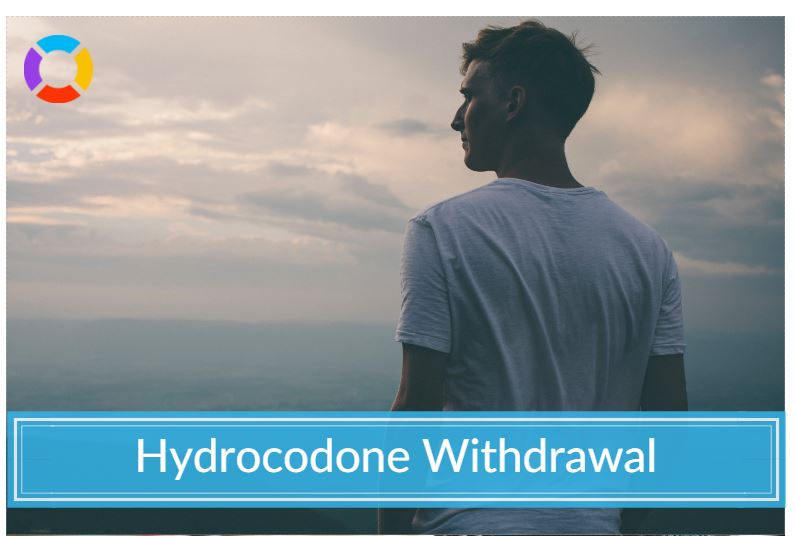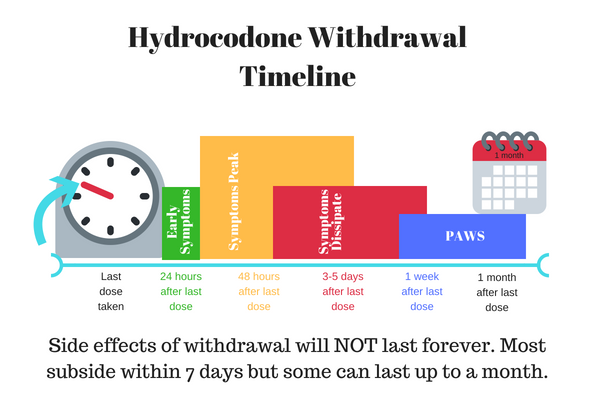Hydrocodone Detox: Signs, Symptoms and Treatment for Hydrocodone Withdrawal

Hydrocodone is the active ingredient in one of the most notably prescribed painkillers in the United States. Found in Vicodin, Norco and Lortab, Hydrocodone products are frequently prescribed in the treatment of moderate to severe pain that has not responded to other alternative therapies.
According to Mayo Clinic, hydrocodone is one of many opioids that has led the U.S. to what is now termed the “Opioid Epidemic” in which tens of thousands of people are impacted annually. If you or someone you love is addicted to the drug combination hydrocodone acetaminophen, it’s time to seek immediate help.
Recent changes in the control of this substance have the DEA and FDA on heightened alert. This is because the dangerous combination of acetaminophen and hydrocodone were long considered a relatively “safe” narcotic. However, recent regulations have increased the monitoring of this drug to a Schedule II narcotic which means it carries a relatively high potential for abuse and misuse.
Repeat use of Norco, Lortab or any prescription medication that includes any combination of hydrocodone such as hydrocodone acetaminophen 5 325 or hydrocodone 7.5 325 will carry a risk of potential addiction. Physical dependence will lead to ongoing symptoms of withdrawal should you attempt to quit abruptly or without a medically monitored tapering schedule.
Prescription opioids such as Vicodin and Lortab are often prescribed to patients that are struggling with chronic pain despite these drugs having been found to provide no long-term benefits to most users. Unfortunately, according to NIH, “opioids can also make people feel very relaxed and “high” – which is why they are sometimes used for non-medical reasons.”
An estimated 2M Americans are addicted to prescription drugs such as hydrocodone. For most, the fear or outright discomfort of withdrawal is what keeps them taking this opiate over and over again. But nobody starts taking a drug with the “plan” of becoming addicted. Addiction and withdrawal are negative side-effects that simply arise during the course of repeat use of this type of drug.
Hydrocodone and Your Brain
Opioids attach to the opioid receptors that are naturally found in the brain and along the spinal cord. These receptors are responsible for transmitting messages of pain to the brain. When hydrocodone is consumed the drug attaches to the opioid receptors causing the blockage of transmission of those pain signals from one area of the body back to the brain.
Alas, the brain doesn’t “FEEL” the pain because the message is never sent to expose the pain that you are suffering from. Unfortunately, “opioids also cause initial feelings of pleasure by acting on the reward system in the brain,” according to the National Institute on Drug Abuse. This pleasure is the exact reason users take hydrocodone for recreational purposes even if they are NOT in any kind of real pain.
Is Dependence & Addiction the Same?
It’s important to understand that any use of this type of drug will likely lead to physical dependence. However, dependence is NOT the same as addiction. The National Institute of Health defines addiction as:
“Characterized by an inability to stop using a drug; failure to meet work, social, or family obligations; and, sometimes (depending on the drug), tolerance and withdrawal.”
However, dependence is defined as an instance in which the body has adapted to a substance in a way such that it requires more in order to achieve a certain effect (tolerance) and symptoms of withdrawal are present if the drug is abruptly eliminated or reduced.
You can be dependent on a medication that is prescribed to you, and you may need to have your dose periodically increased to produce the same effects. You may even feel sick if you miss a doctor’s appointment and do not get your medication refilled on time–this is withdrawal. However, this does not mean that you are addicted.
Likewise, ongoing use of hydrocodone or any opiate can lead to addiction if you aren’t careful or even if you are careful but you have a past history of addiction or a family history of substance abuse.
How Can I Tell if Someone is Addicted to Hydrocodone?
Addiction to hydrocodone can result from a doctor’s prescription for the drug or it may occur after you use the drug recreationally. Regardless of how you become addicted, quitting will be tough. Consistent, repeat use of hydrocodone containing products such as Lortab will alter the way your brain handles pain and pleasure.
Below are some signs that you or someone you love may be addicted to hydrocodone:
- Running out of pills before the next RX-refill date.
- Carrying pills around in undefined containers or in your pocket.
- Changes in mood that are not typical for the user.
- Angry outbursts or irrational behavior.
- Trouble concentrating on everyday tasks.
- Lack of interest in hobbies or family events.
- Taking more pills than prescribed or taking pills that aren’t prescribed.
- Taking pills for anything other than the pain for which they were prescribed.
- Using hydrocodone in any way other than how it was prescribed. This includes snorting or shooting hydrocodone.
Addiction to hydrocodone requires medical treatment and monitoring for patient safety. Many hazards come along with NOT getting help for addiction to this or other opiates as quickly as possible. If you or someone you love needs help, call 800-996-6135 to get help today.
What are the Symptoms of Hydrocodone Withdrawal?
Hydrocodone withdrawal is one of the most hated side effects of becoming addicted to this drug. Unfortunately, there’s no easy way to go about getting off hydrocodone and symptoms of withdrawal can make staying sober seem impossible.
Symptoms generally appear quickly rapidly, within 4-8 hours after the last dose, and they will persist for 3-5 days. People addicted to hydrocodone depend on getting more of this or other opiates in order to fend off withdrawal symptoms and remain otherwise comfortable.
Common symptoms of withdrawal include:
- Nausea
- Vomiting
- Diarrhea
- Upset stomach
- Bone pain
- Muscle pain
- Joint pain
- Headache
- Tremor
- Shaking excessively
- Irritability
- Anger
- Frustration
- Watery eyes
- Runny nose
- High blood pressure
- Rapid heartbeat
- Fever
- Aching
- Flu-like symptoms
- Anxiety
- Fear
- Insomnia
- Cold flashes
- Gooseflesh
- Sweating
- Cravings
What makes the withdrawal so difficult to cope with is the fact that the user KNOWS without a doubt that just one dose of his or her DOC (drug of choice) will effectively stop the symptoms in their tracks. Opiate withdrawal symptoms are comparable to a really bad case of the flu, but unlike the flu which the user knows is only curable with time, withdrawal is curable with more drugs. THIS is what causes the vicious cycle of addiction to continue to repeat.
Hydrocodone Withdrawal Timeline
Determining the exact amount of time that it will take to completely overcome any symptoms of hydrocodone withdrawal is difficult. Each patient is different and various factors come into play. There is no clear-cut answer as to how long hydrocodone withdrawal will last. For some, symptoms dissipate in a day or two. For others, symptoms of withdrawal can linger for up to about 7 days before they peak and begin to wane off.
The severity of withdrawal generally peaks around 72 hours for MOST people. During this time, the user will generally feel irritable and anxious, nauseous, and achy. Most users report skin crawling sensations and a restlessness that makes it difficult if not impossible to sleep.
A typical hydrocodone withdrawal timeline looks something like this:

- First 48 hours – withdrawal symptoms begin with muscle aches, joint pain or bone pain and sweating. Nausea and diarrhea may also occur at this time.La
- 3-5 Days – Profuse sweating, muscle aches, and pain, vomiting and diarrhea continue to be prominent for the user at this time as the body adjusts to life without hydrocodone.
- About 7 Days – Physical symptoms generally subside but a trail of psychological symptoms are left in the wake. Anxiety, depression, shame, and guilt are common during this time.
- Up to one month – Psychological withdrawal symptoms including anxiety and depression may continue during this time but should continue to dissipate. Speak with your doctor or healthcare provider if you continue to feel upset despite your recovery efforts.
Sources
- Mayo Clinic. (2017). Opioid Withdrawal.
- Drug Enforcement Administration. (2014). Final Rule: Rescheduling of Hydrocodone Combination Products from Schedule III to Schedule II.
- National Institutes of Health. (2018). Prescription Opioids.
- National Institute on Drug Abuse. (2007). Background: Prescription Drugs.

